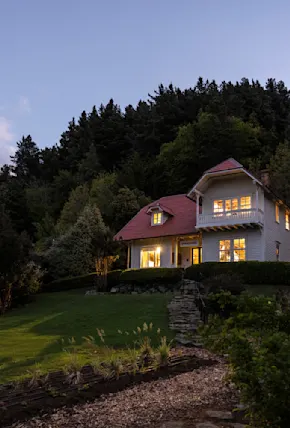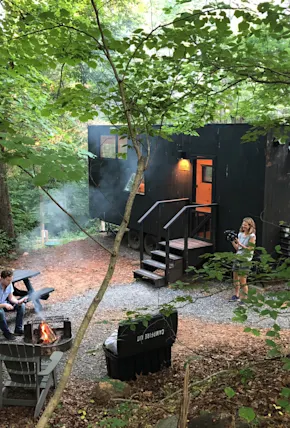Nothing pairs better with a rustic woodland cabin or a modern prefab tiny house than a proper wood stove. These time tested heating devices not only add warmth and a cozy ambiance to a room but offer a renewable alternative to heating your home with oil or gas. And compared to your your standard drafty wood-burning fireplace, a modern woodstove is up to three times more efficient, converting about 70% of burning organic matter directly to heat.
Contemporary wood-burning stoves are also more efficient than their traditional counterparts. Thanks to EPA intervention in the 1990s, a standard woodstove today uses less wood but produces more heat—while emitting less pollution—than wood stoves of yesteryear. This is in part due to the introduction of catalytic and non-catalytic combustion technology processes, which burn gases for heat that would otherwise escape up the flue of an older wood stove. Plus with many sleek modern wood stove designs, they look better than ever, too.
Below we’ll dive into the nitty gritty of how modern wood stoves work, compared to their aging counterparts, and what to look for when considering a modern wood stove for your home, cabin, studio, tiny house, etc. Plus, we’ve scoured the internet to find the best modern wood stoves available now, leaning heavily on the most design-driven, aesthetically pleasing models. Read on and enjoy!





















